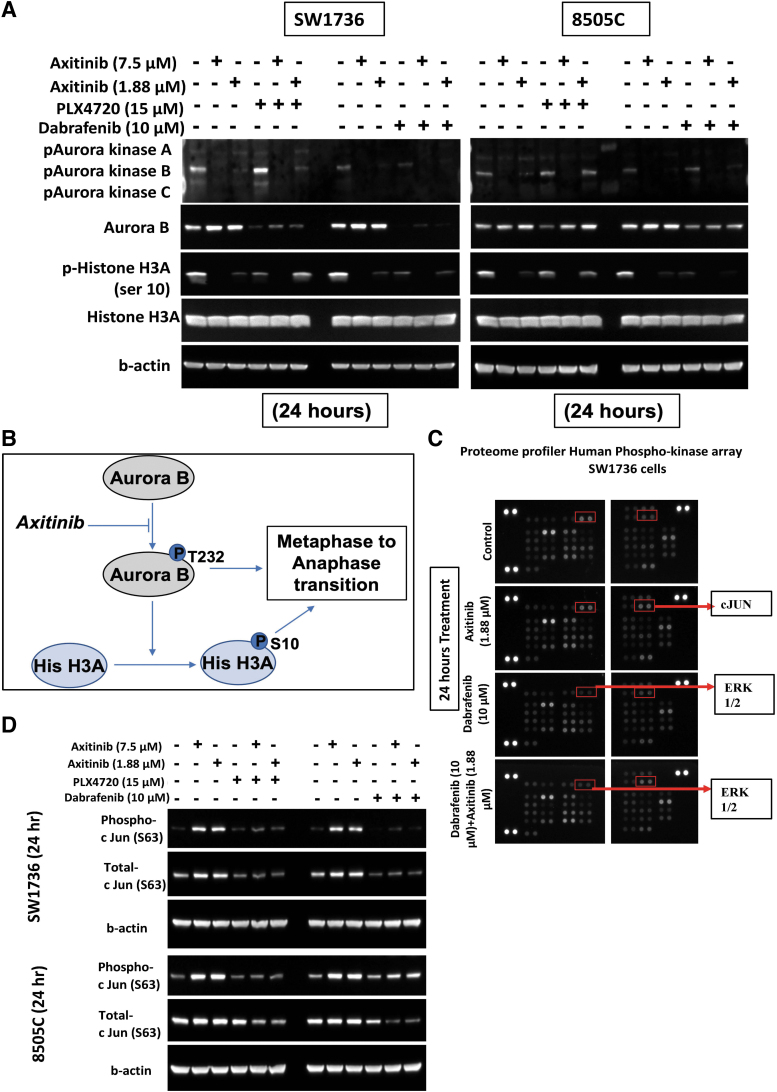FIG. 4.
Mechanism of action of axitinib treatment and in combination with BRAF inhibition in BRAFV600E-mutant ATC cells. (A) Western blot analysis showing that axitinib inhibited the expression of phosphorylated aurora kinase B and phosphorylated histone H3A in 8505C and SW1736 cells after 24 hours of treatment. (B) Graphical representation of the mechanism of action of axitinib. It inhibits phosphorylation of aurora kinase B, which inhibits the phosphorylation of histone 3A, a protein that is required for the metaphase-to-anaphase transition. The overall effect is G2/M cell cycle arrest. (C) The Proteome Profiler Human-Phospho-Kinase Array for SW1736 cells using one BRAF inhibitor (dabrafenib) and axitinib treatment alone and in combination for 24 hours showed increased phospho-c-JUN after axitinib and combination treatment. (D) Western blot analysis to validate the Proteome Profiler Human-Phospho-Kinase Array data for both cell lines using both BRAF inhibitors. Axitinib reduced the expression of phospho-c-JUN and total c-JUN in 8505C and SW1736 cells after treatment for 24 hours. H3A, histone 3A.

